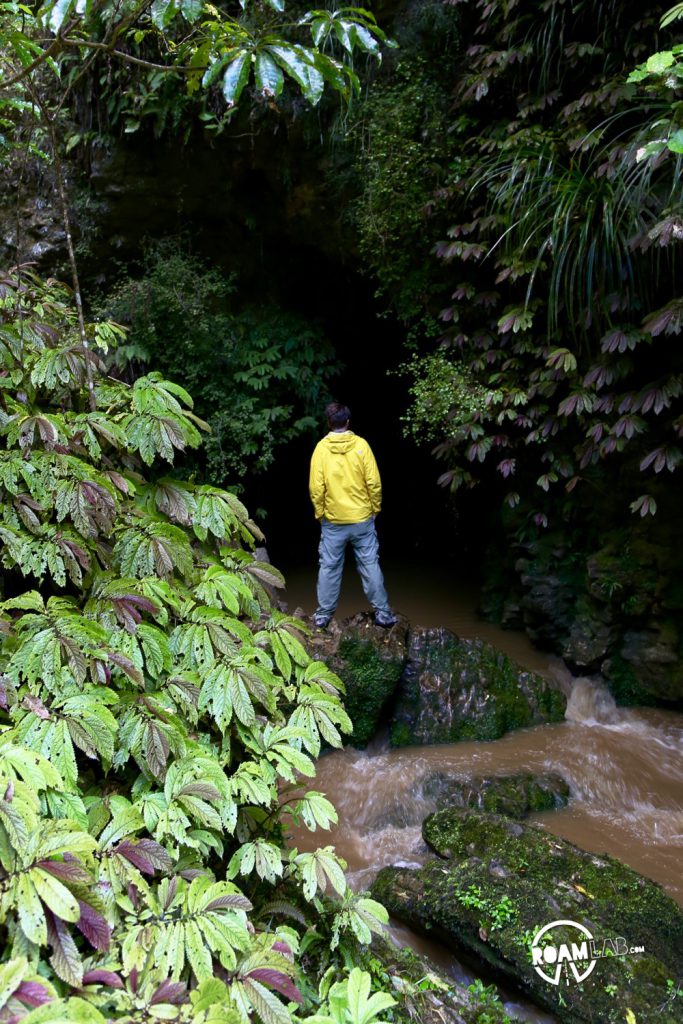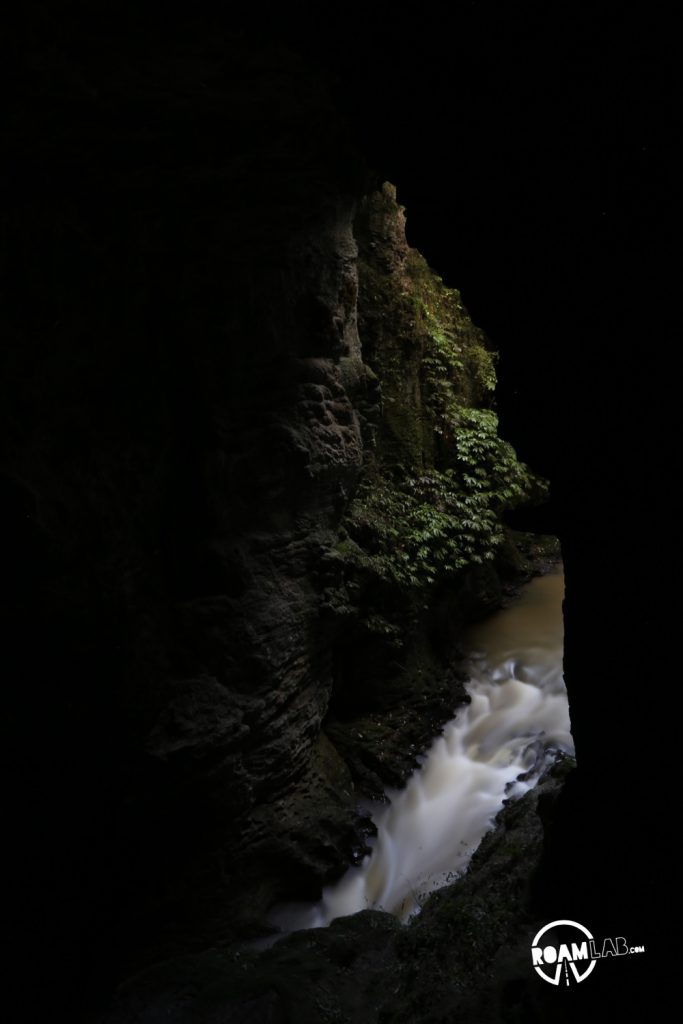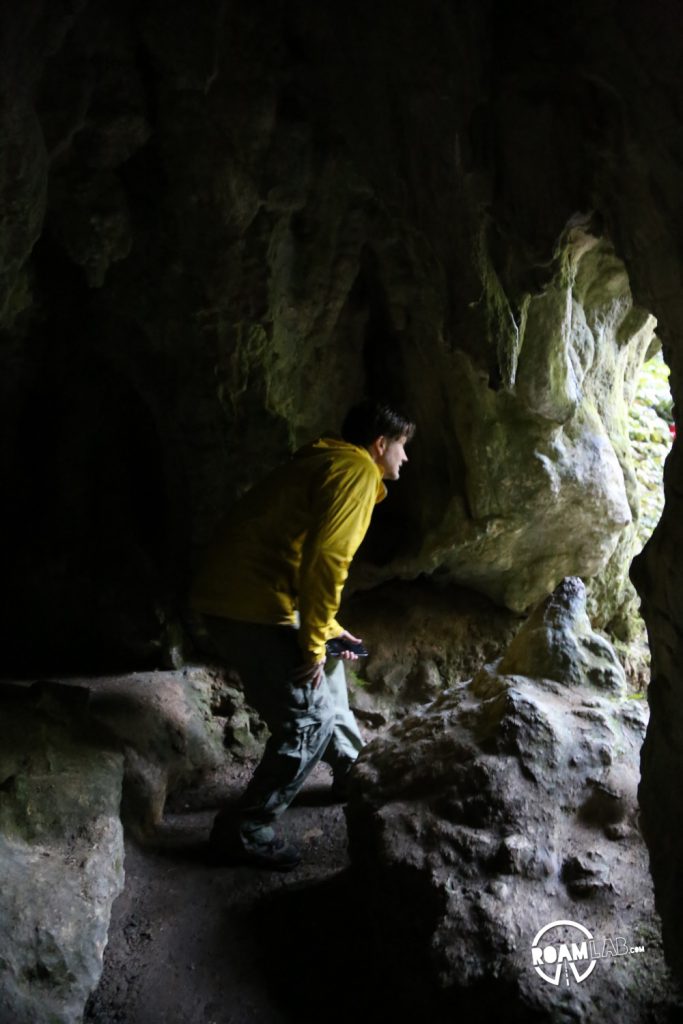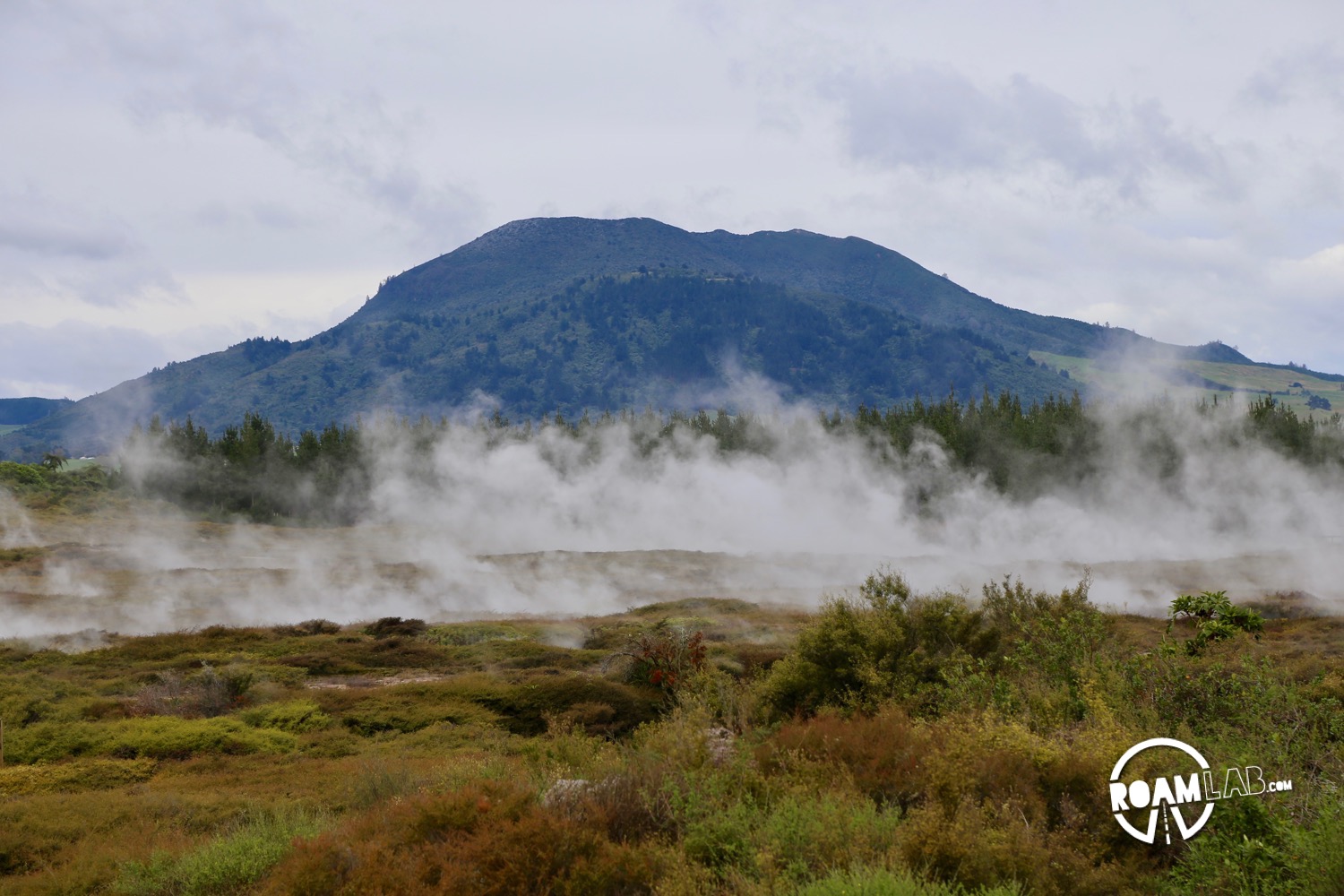
Gales, Gnats, And Tramping Around the Waitomo Glowworm Caves Waitomo, New Zealand
Some days feel as though we are traveling through some massive, manicured natural theme park. The rocks outcrops look like the ruins of some ancient culture. The plants maintain a fiercely bright green, despite the oncoming fall.
The only thing that belies a perfect mastery of the elements is the grey cloud cover and frequent downpours.
We left Rotorua under a thick cover of clouds and head west. Quickly, we are winding down narrow two-lane highways through sprawling green pastures. Cows, deer, and sheep watch us pass with lazy indifference. As we near our destination, we notice taller trees and hedges bordering properties. The winds pick up and batter these natural breaks. By the time we arrived in Waitomo, we were deluged in a heavy downpour and gale strength gusts. We retreat to a restaurant for lunch and to wait our reservation time for the Waitomo Glowworm Caves.
Tubing in the Waitomo Glowworm Caves
Step one is to put on wetsuits. Rain or no, the water will be cold.
Step two is to select our tube—something large enough to fully recline.
Step three is to jump. We each lept, backward, to splash into the stream and begin our lazy flow through the glow worm caves.
The glow worms are not actually worms. They are fungus gnat larva or maggots. The maggots are laid in groups of 10 along the ceiling and underside of ledges of the cave. The first maggot of each clutch that hatches will eat the other eggs for nutrients and then lay out a line laced in toxins to dangles below it. Small insects that are attracted by the maggot’s bioluminescence are caught in the line, poisoned, and consumed by the maggot. Once the maggot has consumed enough nutrients and sufficiently grown, it will enter a pupa stage, similar to a butterfly cocoon. After one to two weeks, the mature gnat emerges. The next few days will be a frenzy of courtship, mating, and egg-laying followed by the gnat’s death.
These glow worms are hard to miss inside the dark cave. We hike through low tunnels and rocky shallows until the water deepens and cave ceilings rise into cathedral spires, all etched in luminescent glow worms.
The greatest disappointment of the experience is that I can not bring my own camera. The tour guide has a point-and-shoot camera that she snaps about, capturing shots as we sputter for air after jumping off a waterfall, but not the dramatic moments of awe as we inspect the worms or gawk at the magnificent rock formations of the cave.
Ruakuri Walk
I am determined, at the very least, to return to the idyllic exit point. It is a few feet off an established hiking path. So, after washing up and dressing in dry clothes, we return to the Ruakuri Walk trailhead and take the 45-minute loop trail through tropical canopy and caves. A few minutes brings us the cave’s exit point. The rest of the trail is constant discovery and delight.

Peering into a glow worm cave. 
Deep cavern carved by the river below. 
Wandering into the light
On To Taupo
We return to our car at 5:30. We still have a two-hour drive ahead of us to reach Taupo where we will be staying the next few days. The first hour is spent drinking in the New Zealand scenery. The second hour, with the sunset, is spent in tales of ghost cars and indignation when Cowboy stops in the middle of the road for a possum. He let it run off into the bushes rather than hit it. (Possums are an invasive species that have been large contributors to the population decline in native birds.)
When we arrived in Taupo, we happily eat a late dinner at a local pub, and go to bed.









